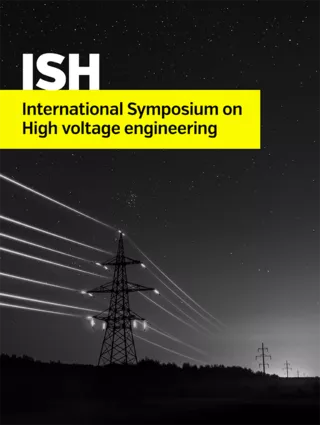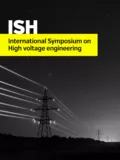Summary
In mixed overhead line and underground cable connections transients upon switching actions occur. Knowledge of their magnitudes, in particular at the transition points between lines and cables, is important information for safe operation of the connection. This paper discusses measurements, performed for the Dutch transmission system operator, based on open air sensors picking up capacitively the electric fields from the line. Near each phase a sensor is placed, which can be installed in a short time also when the connection is in operation. Options to minimize the effect of cross-coupling between phases and sensors near other phases are discussed. This includes aspects of positioning of the sensors in relation to methods to restore single-phase waveforms from switching events by decoupling. The differentiating-integrating measurement approach is adopted, meaning that the sensor detects the time derivative of the line voltage and the original waveform is restored by means of integration. This approach allows using long measurement cables between sensor and integrator, as they are terminated characteristically, and mobile recording equipment can be installed on a safe distance without loss of signal integrity. The method has excellent electromagnetic compatibility aspects allowing for a straight response over a bandwidth from 10 Hz to 5 MHz. Results from measurements at a 380 kV mixed overhead line underground power cable connection obtained at a transition point and at a substation are presented. Switching transients recorded at the transition point were accurately restored as the main crosscouplings could be determined from a fitting procedure assuming perfect symmetric three-phase voltage after energization. For the substation measurements, due to the close distance between different phase conductors, stronger cross-coupling occurs. Though not all main coupling coefficients can be retrieved uniquely here, it is shown that the individual phase waveforms can still be reliably restored. It was observed that the switching overvoltages remained well below the standard limits under all performed switching sequences. Depending on the line configuration switching excite high-frequency oscillations, which potentially can disturb nearby equipment.
Additional informations
| Publication type | ISH Collection |
|---|---|
| Reference | ISH2017_384 |
| Publication year | |
| Publisher | ISH |
| File size | 642 KB |
| Pages number | 6 |
| Price for non member | Free |
| Price for member | Free |
Authors
D. BARAKOS, F. BECKERS, M. HOOGERMAN, R. HOPPE VAN, H. ZANDEN VAN DER, P. WOUTERS




